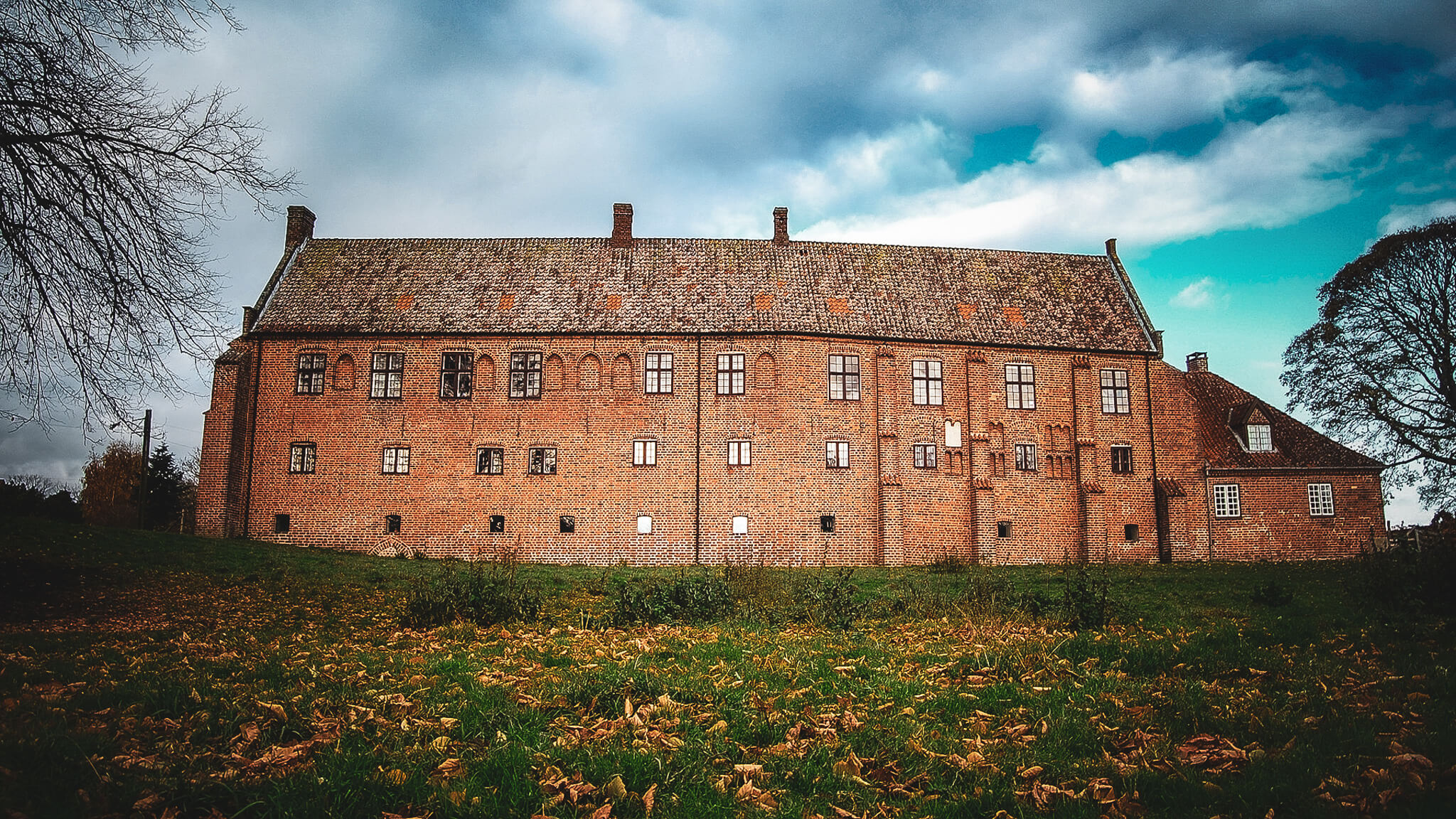Welcome to the Abbey Garden
Enter a world of fragrances and colours
The monastery garden is a fragrant pantry for both humans and animals. The honeybee knows it: After buzzing around the garden’s sea of flowers, it finally finds the pink valerian, where it finds nourishment in the flowers. It also knows that with the changing of the seasons, the monastery garden is always changing. In the fall and winter, the tranquility subsides, but next spring and summer, it’s buzzing with life again.
The abbey gardens in the Middle Ages
We don’t know for sure what Esrum Monastery’s gardens looked like when the monks lived at the monastery. But gardens were important to the Cistercians, and the monks’ desire to live secluded from the outside world meant that they had to be self-sufficient.
They therefore grew many types of vegetables, fruits and herbs to meet their needs. The gardens of the medieval monastery were scattered throughout the area and had several functions: medicinal herb gardens with medicinal plants, kitchen gardens and orchards for the monastery kitchen, hop gardens for brewing beer and the friary garden, which was an outdoor space for reading and contemplation.
Wilderness or orderly gardens?
When the Cistercians build a new monastery, it is important to them that the site is uninhabited and with nature. They consider the wild nature to be a place where the devil dwells. When the monks here in Esrum started building the monastery, they sought to create a place dedicated to God – a paradise on earth. Paradise was created through the monks’ hard work, taming the wild nature, laying out structured gardens, farming and prayer.
For modern people, the nature in Esrum and North Zealand is probably not what you would describe as ‘wild’. But to the Cistercian monks who traveled here from France, the cold North Zealand landscape may have seemed pretty wild.
A colourful sea of plants
The monastery garden at Esrum Monastery is a modern version of medieval gardens. All the plants in the garden are medicinal herbs, herbs or vegetables grown by the monks here in Esrum, and many are plants that the monks brought with them when they moved here from southern Europe.
The garden is a sea of scents, colors and sensory impressions. We have over 150 different species in the garden. Some are familiar herbs and perennials that many of us grow at home in the garden, but there will also be more rare plants, especially medicinal herbs.
The garden is always open and can be experienced around the clock. Take a seat in the beautiful outdoor space overlooking the meadows where the sheep graze in summer. Sit on a bench or walk around the many beds, discover the individual plants and read their stories.
If you want to learn more about Klosterhaven, you can book our ‘Taste of Klosterhaven’ tour.

